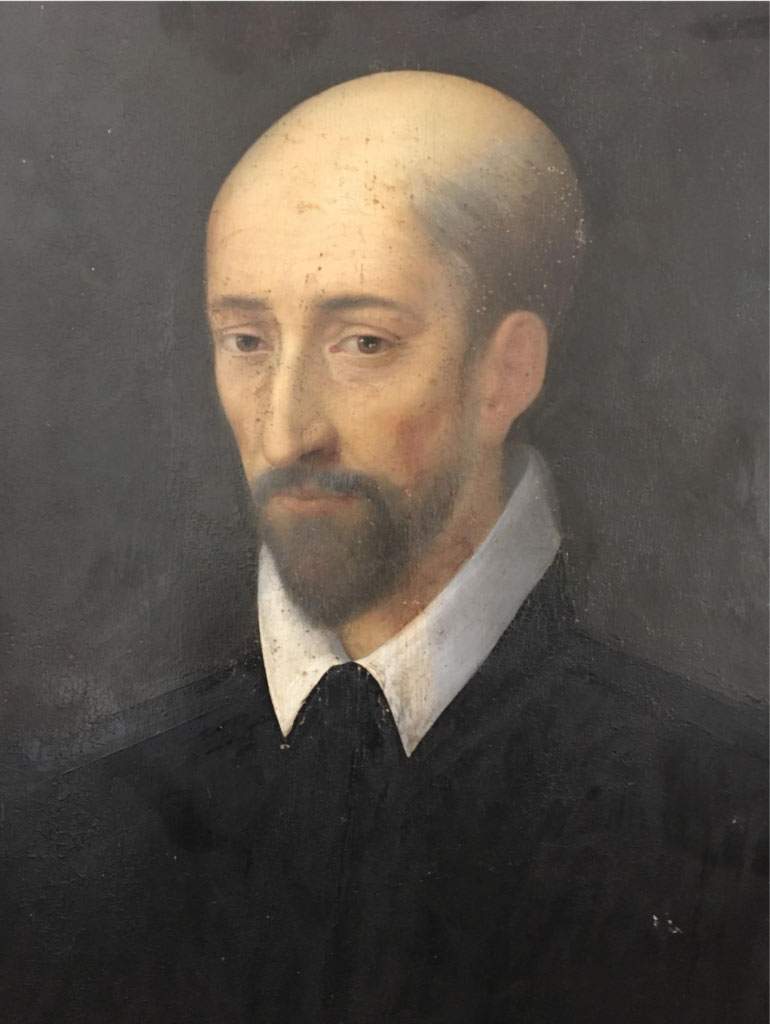The script is always the usual one: the anniversary of the birth or death of an artist, in this case Leonardo da Vinci (born in Anchiano, near Vinci, in 1452, and died in Amboise in 1519), is celebrated, and invariably a discovery of a painting that someone would like to attribute to the birthday boy of the day has to pop up. Of course, this is the case with Leonardo as well: now in France, from the chateau of Valençay, one of the manors in the Loire chateau district, a (very ugly) Portrait of a Gentleman has popped up that is sought to be attributed to Leonardo da Vinci. Not only that: the identification of the subject has also been proposed, which could be none other than the famous politician and man of letters Niccolò Machiavelli (Florence, 1469 - 1521).
All this on the basis of an 1874 document that mentions a panel painting, 55 by 42 centimeters, preserved in the castle, attributed to Leonardo da Vinci and depicting precisely the Florentine philosopher. The note, written by the chateau’s administrator to the building’s owner, the Prince de Talleyrand, reads, “I have had a case containing a panel (Machiavelli painted by Leonardo da Vinci) packed and sent by rail by the porter.” Sylvie Giroux, director of the Château de Valençay, believes it likely that the work demonstrates a connection between Leonardo da Vinci and Machiavelli (the director’s opinion is reported by Agence France Presse).
However, enthusiasm is being cooled by Anne Gerardot, an official at thedepartmental archives of Indre (the department in which the town of Valençay is located), who was quick to clarify that even if a painting by Leonardo is mentioned in a 19th-century document, it does not mean that the work is really by Leonardo. Gerardot has been working on this case for about a year, and says that only further analysis will be able to confirm or deny the attribution. Not least because, moreover, Gerardot points out that the man portrayed in the painting does not resemble Machiavelli at all (we know the image of the man of letters from other depictions): if anything, it is more plausible that it is a portrait of Michel de Montaigne, since the somatic features make him look much more like the French philosopher.
Then there are technical details that might rule out the hypothesis of an attribution to Leonardo: the support, in particular, has been deemed too smooth and regular to be from Leonardo da Vinci’s time, although it is pointed out that the work was restored in Germany in the 1890s, which might explain why the unusual support.
There would also be objections to the style: this bizarre character appears too flat, too stereotypical and schematic, too uninteresting, and with unbelievable anatomical proportions (just look at the shape of the skull) to think that it was really made by one of the greatest painters in the history of art. Of course: those who hope for Leonardo might say that the current appearance of the painting is the result of repainting, and that restoration work will be needed to determine what lies beneath the alleged Machiavelli. But at the moment there does not seem to be much room for attribution to Leonardo. Not least because, again in the 1874 note cited above, an anonymous Portrait of Michel de Montaigne is also mentioned. So, the matter could already be resolved without the need for further investigation. And yet another media case taken apart simply by reading the documents and looking at the painting.
Pictured: sixteenth-century unknown, Portrait of a Gentleman (sixteenth century; oil on panel, 55 x 42 cm; Valençay, Valençay Castle)
 |
| But can one really think that this (very ugly) alleged portrait of Machiavelli is by Leonardo da Vinci? |
Warning: the translation into English of the original Italian article was created using automatic tools. We undertake to review all articles, but we do not guarantee the total absence of inaccuracies in the translation due to the program. You can find the original by clicking on the ITA button. If you find any mistake,please contact us.